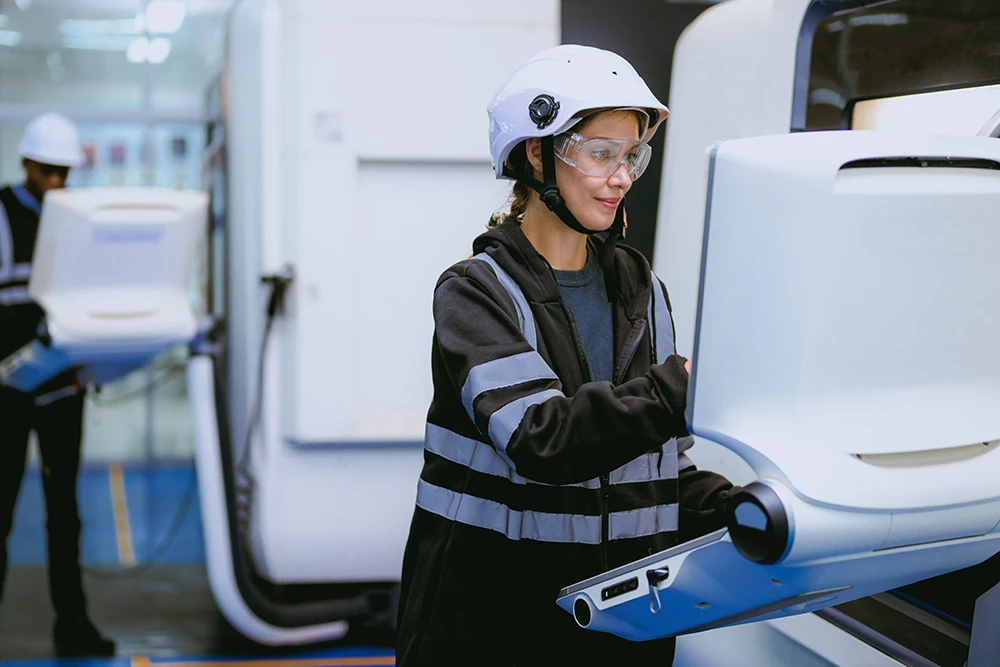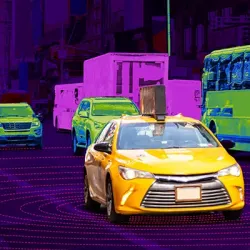Industry Knowledge
The Art of Autonomous Technology: Amplifying Automation Across Industries
Discover the world of autonomous technology and its potential impact on customers and businesses.
From self-driving cars to fully automated machinery, autonomous technology is drastically and rapidly transforming the way we live, work, and play. Verified Market Research estimates that the global market will reach USD$ 50.1 billion by 2028, proving the continuous increase in demand to bring more benefits to consumers. This technology is no longer nice to have—it is a distinct, competitive advantage in a rapidly changing world. Autonomous technology is the way forward, and nothing can stop it.
What is Autonomous Technology?
Autonomous Technology refers to the use of artificial intelligence (AI) to enable machines and systems to run independently with little or no human involvement. This technology enables computers to adapt to their surroundings while gradually becoming smarter and more efficient.
Autonomous devices are also becoming more widespread in various sectors, from manufacturing and logistics to Internet of Medical Things (IoMT) and hospitality. These machines can execute repetitive or dangerous tasks faster and more accurately than humans, enabling workers to focus on projects and tasks that need the magic of the human touch.

The Importance of Autonomous Devices
By using AI solutions to enable machines and systems to operate independently, autonomous technology aims to improve efficiency, reduce costs, and enhance safety. It also opens up new, revolutionary business opportunities and drives innovation.
- On Transportation and Vehicles:
- Autonomous vehicles can use sensors and algorithms to navigate roads and decide based on traffic patterns, weather, and other factors. This can lead to safer and more efficient transportation, as well as reduced traffic congestion and emissions.
- On Devices and Machinery:
- Companies can use autonomous machines and drones for various applications, from aerial photography and surveillance to package delivery and emergency vehicle response.
By using AI to control their flight paths and decisions based on real-time data, drones can operate more safely and effectively than human pilots.
With such a revolutionary technology, autonomous devices are getting increasingly widely accepted, with their advantages—and certain disadvantages—coming into play.
The Advantages of Autonomous Machines
The advantages of autonomous technology are many and far-reaching. As this technology continues to strengthen and advance, we can expect to see even more significant benefits emerge.
 Better Efficiency and Productivity: |
By enabling systems to operate independently, autonomous machines can perform tasks faster, more accurately, and with greater consistency than human workers. This can lead to increased output, reduced downtime, and faster turnaround times. |
 Increased Safety: |
Improved safety is one of the most significant advantages of autonomous technology. Smart machines can operate in hazardous environments, reducing the risk of injury for human workers. Autonomous vehicles and trucks may reduce the number of accidents caused by human error, leading to fewer injuries and fatalities on the road. |
 Higher Cost Savings: |
By reducing the need for human workers, businesses can save on labor costs. By automating tasks, employees can focus on more complex tasks, leading to increase in efficiency and productivity. Self-driving vehicles also reduce fuel consumption and maintenance costs, leading to significant savings for businesses and individuals alike. |
 Greater Environmental Benefits: |
The future of autonomous vehicles can optimize traffic flow, reducing congestion and carbon emissions. On the other hand, autonomous agricultural devices can optimize resource use thus, reducing waste and conserving resources. |
The Advantages of Autonomous Machines
Autonomous devices offer many advantages and benefits, but still expose challenges that threaten the security, safety, and stability to businesses and their customers.
 Technical Limitations: |
Sensor accuracy and training data processes are two of the most common challenges autonomous technology faces. In unfortunate cases, machine-learning (ML) devices trained with deeply biased and subpar data can put human safety at risk. |
 Legal and Regulatory Issues: |
Self-driving cars must comply with a complex web of federal and state regulations, and liability issues must be addressed during accidents or malfunctions. Privacy and security concerns must also be considered in the development of some autonomous machines examples such as facial recognition devices and medical assistant bots. |
 Ethical Considerations: |
There are concerns about the impact of autonomous machines on employment, especially with the rise of Generative Pre-Trained Transformer (GPT) that mimics human language. In addition, there are questions about the responsibility of autonomous machines and the ethics of programming to make moral decisions. |
The reliability and durability of autonomous machines must be improved to ensure their safe and effective operation over time.
Despite the challenges facing autonomous technology, there are many current trends and developments that suggest a bright future.
The Future of Autonomous Technology is Now
Tech-enabled companies are investing in developing autonomous cars, drones, and robots—making significant progress in improving the technology's reliability and performance. In addition, advancements in machine learning and artificial intelligence are fueling rapid innovation and new applications.
- On Society and Industry:
- From reducing traffic congestion and improving safety to enhancing productivity and creating new business models, the possibilities are vast. But like most culturally significant changes, the impact will solely depend on how the society addresses it collectively.
- Opportunities and Challenges for Businesses:
- Autonomous machines examples such as automated machinery and smart devices have the potential to reduce costs, increase efficiency, and create additional revenue streams.
This gives businesses the opportunity to navigate technical, legal, and ethical challenges to develop and deploy autonomous systems.
The future of autonomous technology is both exciting and challenging. While significant progress has been made in improving the technology and exploring its applications, much work remains to be done to address the challenges it poses.
As technology continues to grow and mature, the opportunities and challenges for society and industry will become increasingly apparent.
Explore the Future with Us
Recognized by Everest Group’s World’s Fastest Business Process (outsourcing) Service Provider in 2022 and highly rated in Gartner Peer Review, TaskUs is responsible for providing Ridiculously Good AI + human-enabled services to our customers and clients.
From providing data annotation services to implementing enterprise-level security, we have established a standard operation process that guarantees near-perfect scores on productivity and efficiency in various industries such as FinTech, Entertainment + Gaming, Healthcare Tech, and Retail + eCommerce.
We are a bionic company that believes in the philosophy of harboring the perfect balance between artificial intelligence and human intelligence—and you should too.
- 1^Autonomous Technology Market Size, Share, Scope, Trends, Forecast
- 2^Can machine-learning models overcome biased datasets?
- 3^The Rise of GPT: 5 Jobs That Will Be Completely Transformed in the Next 3 Years
References

We exist to empower people to deliver Ridiculously Good innovation to the world’s best companies.
Useful Links







